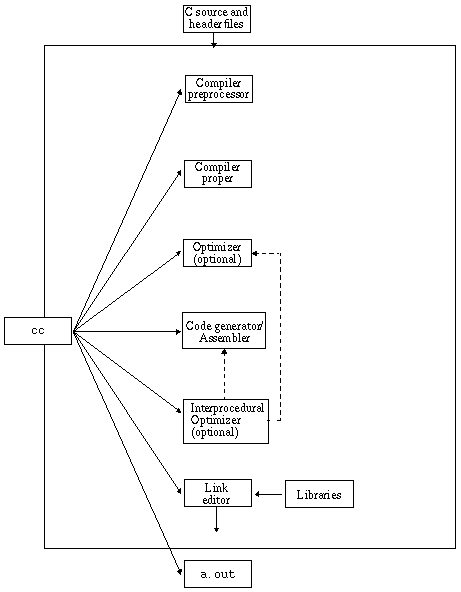| C H A P T E R 1 |
|
Introduction to the C Compiler |
This chapter provides information about the C compiler, including operating environments, standards conformance, organization of the compiler, and C-related programming tools.
The compiler conforms to the following standards:
This release also supports some of the features specified in the following standard:
Because the compiler also supports traditional K&R C (Kernighan and Ritchie, or pre-ANSI C), it can ease your migration to ISO C.
The term C99 used in this book refers to the ISO/IEC 9899:1999 C programming language. There term C90 refers to the ISO/IEC 9899:1990 C programming language.
The C compilation system consists of a compiler, an assembler, and a link editor. The cc command invokes each of these components automatically unless you use command-line options to specify otherwise.
Appendix A discusses all the options available with cc.
The following figure shows the organization of the C compilation system.
 [ D ]
[ D ]
The following table summarizes the components of the compilation system.
There are a number of tools available to aid in developing, maintaining, and improving your C programs. The two most closely tied to C, cscope and lint, are described in this book. In addition, a man page exists for each of these tools.
Other tools for source browsing, debugging and performance analysis are available. See Accessing Forte Developer Documentation for more information.
Copyright © 2002, Sun Microsystems, Inc. All rights reserved.